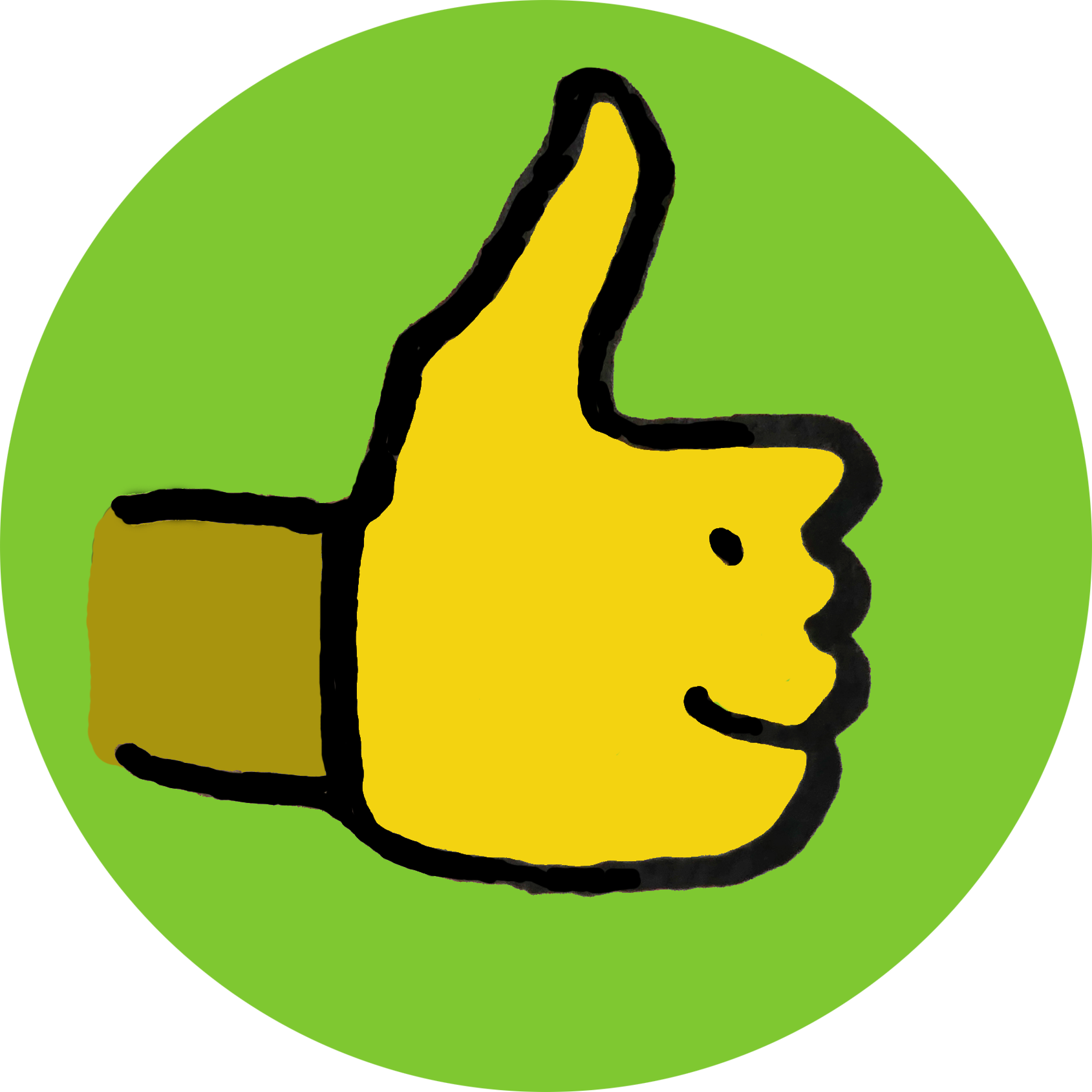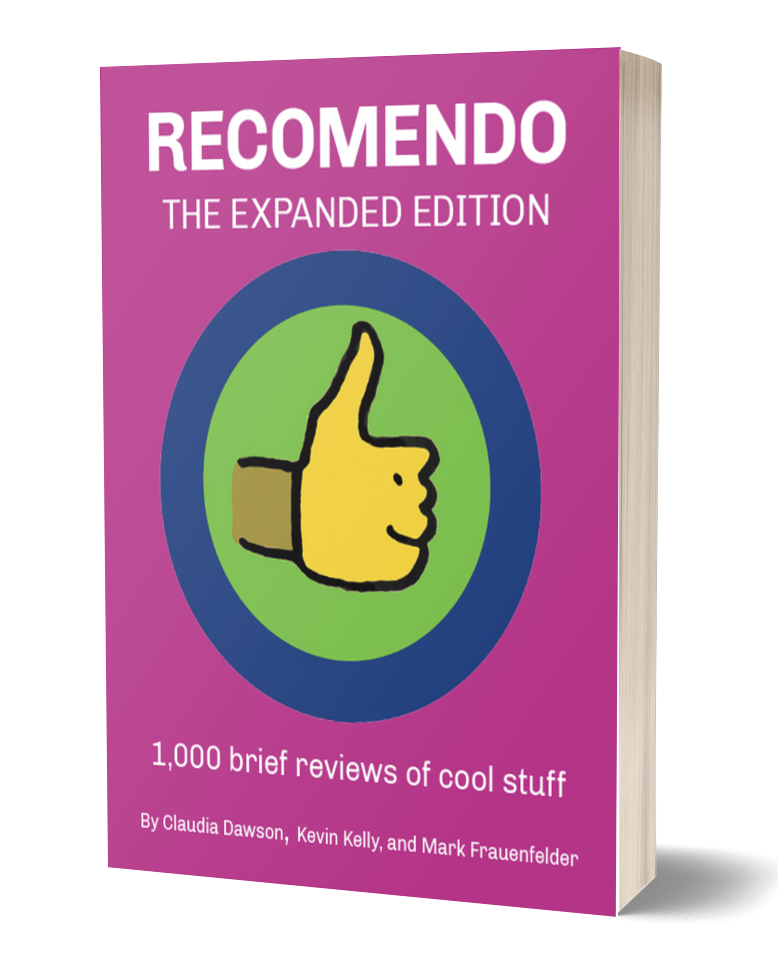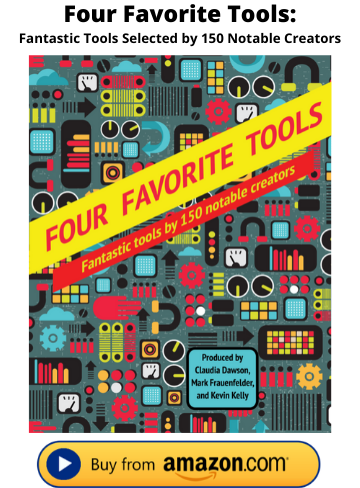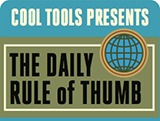09 June 2025
Bookbinding
Tools for Possibilities: issue no. 141
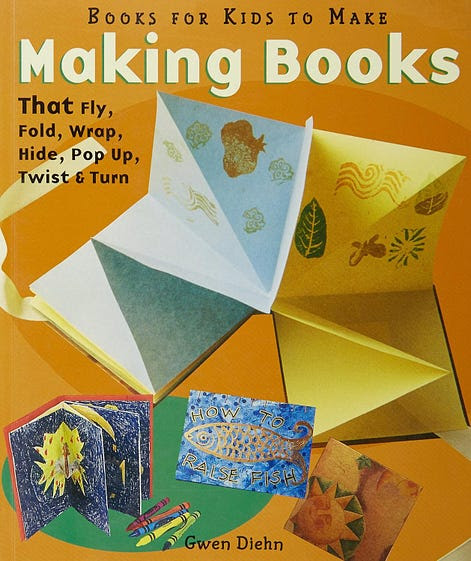
3D book making
Making Books that Fly, Fold, Wrap, Hide, Pop Up, Twist, and Turn
All-around best book for exploring alternative forms of the book. It’s aimed at kids, but works for anyone creative. — KK
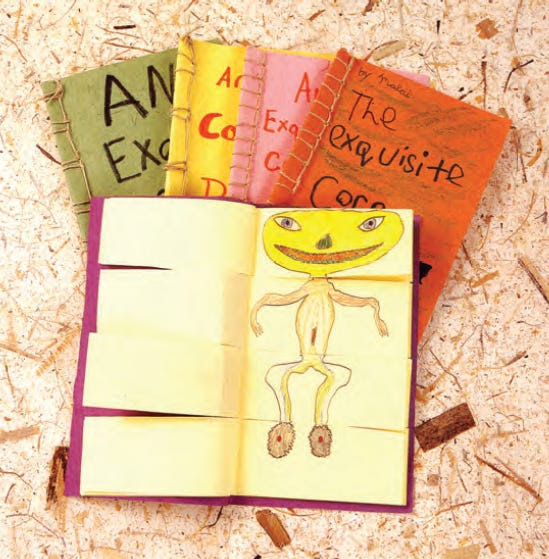

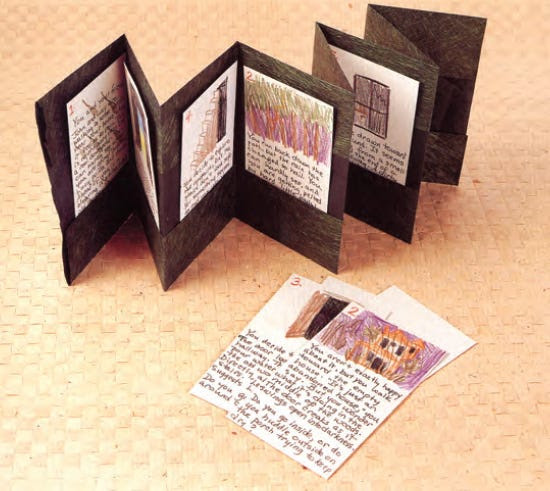

Creative bookmaking guide
Keith Smith published Non-Adhesive Binding in 1990. At the time there were few other bookbinding manuals in print (and in comparison with other crafts, there still aren’t many). Books by Arthur Johnson, Edith Diehl and Douglas Cockerell offered instruction according to specific craft tradition. These manuals told how to bind a book with very little room for creativity other than decorative choices (what color would you like the leather on the spine to be?). The books were hard to find and contained long lists of tools and desirable equipment that a bookbinder should have.
Keith Smith’s book is completely different. He illustrates basic techniques that can be used to create a wide variety of bindings. He encourages the binder to explore how books move, how structural variations influence that movement, and how both movement and structure can lead the binder to fully engage the creative intent of the author’s work. He is even more enthusiastic about the possibilities for binders who are the creators of content or those who we now call book artists.
I started bookbinding in 1991 and Keith Smith’s Non-Adhesive Bookbinding was the first manual I ever bought. As Smith required very few tools and almost no equipment, I was able immediately to start making dozens of books based on his instructions. His drawings of often complex sewing patterns sometimes confused me (and sometimes still do!), but after having now tried to illustrate bookbinding or repair techniques of my own, I’m amazed at how much he conveys so clearly.
It has become more apparent to me with time and experience that his book is a deeper resource than it may first appear. While his methods are simple and often result in astonishingly modern looking bindings, his book is profoundly informed by historical methods and models. Unlike a bookbinding manual that represents a defined tradition, he uses the knowledge of earlier binders to encourage new binders to create their own paths.
Smith’s Non-Adhesive Binding may be almost 20 years old, but it remains a vital resource for bookbinders, book artists, and anyone who wants to creatively understand the book form. — Kristen St. John
- The book, constituted by everything in the pyramidal hierarchy, is always top and center, the totality and must dominate. Each decision on any element within is subordinate to the realized book. If the binding dominated, the book would be superficial. If conceptual, visual and physical organization were not considered, the content of text and/or pictures would be merely a compilation of islands, rather than an orchestrated totality.It would appear that at one extreme, the content is quite separate from the process of binding. For me, nothing could be farther from ideal. I sometimes think about the physical object. There is concrete space between words and/or pictures. Movement is constructed through content, which determines the rate of turning pages.
- A book can be created through a play upon the action of turning a page. Indeed, a lifetime’s work can have as one under-pinning the exploration of what physically transpires in turning the page. Becoming involved and excited about any aspect of the physical book can reveal potential which, once understod, can easily be expanded as theme…. A book grows out of an understanding of its inherent properties, rather than the inclusion of outside elements. Conception springs from the physical format, evolving into a realized book.
Once a week we’ll send out a page from Cool Tools: A Catalog of Possibilities. The tools might be outdated or obsolete, and the links to them may or may not work. We present these vintage recommendations as is because the possibilities they inspire are new. Sign up here to get Tools for Possibilities a week early in your inbox.
06/9/2508 June 2025
Objects from the future/Nature identifier/Beefy power bank
Recomendo - issue #465
Best power bank for pro users
With 140W of power, the Anker 737 PowerCore 24K power bank is beefy enough to juice up a laptop. It’s hefty — 1.3 pounds and the size of a soda can — but that’s the tradeoff for this much power. The color display shows you how long it will take to charge your device. If you need serious portable charging, this is worth the investment. It comes with a USB-C to USB-C cable designed to handle the high wattage. — MF
Imaginal Future Tool
Objects from the Future is a digital prompt generator that helps you imagine physical objects from potential future worlds. You are given five cards, each representing a different societal outcome, timeframe, object, industry, and human need to be satisfied. These prompts then become doorways to the imaginal. I spent some time envisioning what family rituals might exist 100 years from now, when a large-scale event has led society down an unpredicted path and what is needed most is “comfort” in uncertain times. I didn’t get a clear picture in my mind, but I sensed that even 100 years from now, the greatest source of comfort for me would be rooted in the natural world, not digital. — CD
Polyglot sparks global joy
Language enthusiast Yuji Beleza travels the world recording his encounters with strangers. He speaks five languages fluently — Japanese, English, Russian, German, and Turkish — and knows enough to hold basic conversations in dozens more. When people tell him where they’re from, he immediately switches to their native language. Watch as their expressions transform from coolness and suspicion to warmth and trust. My friend Irwin Miller shared Beleza’s Instagram channel with me, and it instantly lifted my spirits. — MF
Nature identifier
The best mobile app for identifying living species is iNaturalist. It is free, fast, and can identify most plants, animals and many fungi. Load it onto your phone, use it to snap a picture, and then its AI will ID it. To date, it can identify 500,000 species. You can then share your observation with iNaturalist’s extensive community of enthusiasts who can confirm, refine, and expand upon what you found. Because you can opt to allow the location of your observation, the app is also contributing to science. (The current app is a newly rewritten version that replaces both iNaturalist Classic and kid-version Seek.) Twenty five years ago I co-founded a non-profit to catalog all the species on the planet and this is the technology that we dreamed about. — KK
Wonder Tools
I have a rotating door of newsletters in my inbox, and I’m often subscribing and unsubscribing as I outgrow them, but Wonder Tools is one that I continue to read weekly. Jeremy Kaplan generously offers in-depth research about the most useful tools on the Internet and shares his insights for free. I always learn something new and discover websites and apps that make my computer life easier. A good example is his recent issue: Deep Research with AI: 9 Ways to Get Started. — CD
Rubber block printing
Did you ever make a linoleum wood-block print in school? I did, and cutting linoleum was a pain. It took a lot of energy and effort to even make a small design. Recently I returned to making woodcut prints and hand-carved stamps because I discovered the secret: instead of cutting either wood or linoleum, I carve on a sheet of firm rubber, which cuts like butter. Speedball, the legendary company making carving tools, produces their own Speedy-Carve Blocks which have the consistency of a pencil eraser. Many other generic manufacturers in China offer this soft carving sheets, too. Now, making a block print is quick and enjoyable. — KK
Sign up here to get Recomendo a week early in your inbox.
06/8/2506 June 2025
Book Freak 181: Stolen Focus: Why You Can’t Pay Attention
Johann Hari shows you how to regain your ability to concentrate

Our collective attention spans are shrinking. Johann Hari’s Stolen Focus helps you understand why and what we can do about it. Through research and interviews with experts, Hari reveals that our inability to focus isn’t just about willpower or personal failing — it’s the result of powerful forces that are deliberately stealing our attention. From big tech’s surveillance capitalism to rising stress levels, sleep deprivation, and polluted food and environments, Hari uncovers the systemic causes while also offering hope through both individual and collective solutions.
Here are four key pieces of advice from the book:
Acknowledge That Multi-Tasking is a Myth
The human brain can only hold one or two conscious thoughts at a time – this is a fixed biological limit of our neural hardware. Yet we’ve convinced ourselves we can think about many things simultaneously. This is simply a myth we created rather than accepting our natural cognitive constraints.
Your Attention Requires Three Forms of Light
- Spotlight attention: Focuses on immediate tasks and short-term actions (making coffee, finding glasses, reading a chapter). When disrupted, you can’t complete these immediate tasks.
- Starlight attention: Directs your longer-term projects and goals (writing a book, building a business, being a good parent). Like stars guiding travelers, it keeps you oriented toward your bigger objectives. When disrupted, you lose sight of where you’re heading.
- Daylight attention: Enables self-reflection and clarity about what you truly want. It helps you understand why you chose your long-term goals and who you want to be. When this attention is disrupted, you may lose touch with your core identity and purpose.
Create Flow States For Deep Focus
To achieve a flow state, you must dedicate yourself to a single task – no multitasking, no distractions. Mihaly’s research shows that flow demands your complete mental focus on one activity. Since our brain can only truly process one or two things consciously, flow emerges when we align with this natural limitation and direct all our cognitive resources toward a single purpose.
Sleep is Crucial for Attention
Sleep deprivation directly damages our ability to focus and maintain attention. Among the first cognitive functions to deteriorate when we lack sleep is our attention span. Research shows that as tiredness increases, people struggle with basic tasks like following conversations or playing simple games. Each hour of missed sleep progressively erodes our capacity to concentrate and process information effectively.
06/6/2505 June 2025
New Flying Hassles/Portugal Tops Wish Lists/Bilt Rewards Points
Nomadico issue #158
New US Flying Hassles and Warnings
Southwest officially started its sad decline yesterday, with the free checked bags eligibility moving from “everyone” to “almost nobody.” (Unless you have their credit card.) They also announced that you can’t put phone chargers in the overhead bin. United is telling passengers to get to the airport earlier or possibly be denied boarding, even if flying domestic with just a carry-on. Then the TSA made a public announcement that we shouldn’t trust the USB chargers that the airports are in charge of because of potential malware. (Apparently they haven’t heard of charging-only cords that can’t transmit data.)
Portugal Tops a “Where I Want to Move to” Survey
Mexico is the top country for US and American expats who have moved abroad, but according to this survey from a moving consulting company, Portugal tops the list for those who haven’t pulled the trigger yet. It was no small sample size: 116,363 Americans through the whole year of 2024. Others on the list included Costa Rica and Mexico, but 6 of the top 10 were in Europe.
Water Bottle Sling
I’ve used a ChicoBag water bottle sling for a decade probably, made from post-consumer recycled plastic. Our team member and Recomendo contributor Claudia mentioned it recently there so I’ll just use her quote: “For walks and short hikes, I’ve been leaving my daypack behind in favor of this ChicoBag water bottle sling. It’s convenient and comfortable to wear, and it even has a large pocket for my phone and keys. It folds up and takes up no space, so I just carry it with me at all times.”
Bilt Rewards for Points on Rent
I haven’t used this because I’m a homeowner, but if you pay rent each month, you could be getting something extra from that big expense by signing up with Biltrewards.com and running your rent through there. The points you build up can be transferred to airline and hotel programs at a 1:1 ratio like you can from Amex or Chase Sapphire. They also have neighborhood-focused deals at restaurants and gyms. There’s no fee if you pay with ACH, an automated check system, or Bilt’s own credit card.
Correction: A few readers dug deeper into the fine print than I did for last week’s product keepyourhomeip.com. Turns out there is a mandatory $8+ monthly support fee after you buy the equipment and set up the system.
A weekly newsletter with four quick bites, edited by Tim Leffel, author of A Better Life for Half the Price and The World’s Cheapest Destinations. See past editions here, where your like-minded friends can subscribe and join you.
06/5/2503 June 2025
I Dissent / Cheap Novelties
Issue No. 69
I DISSENT HAMMERS HOME WHY IT’S EASY TO ADMIRE RUTH BADER GINSBURG
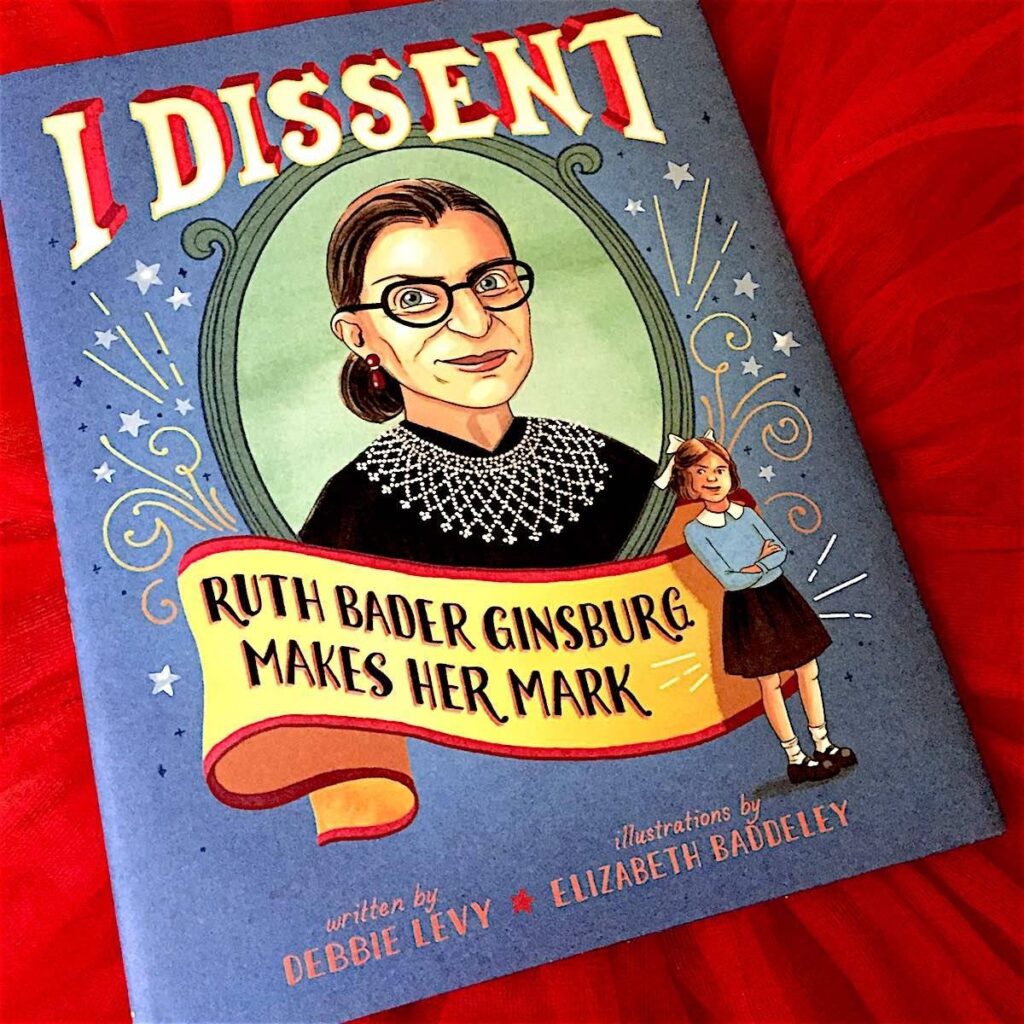
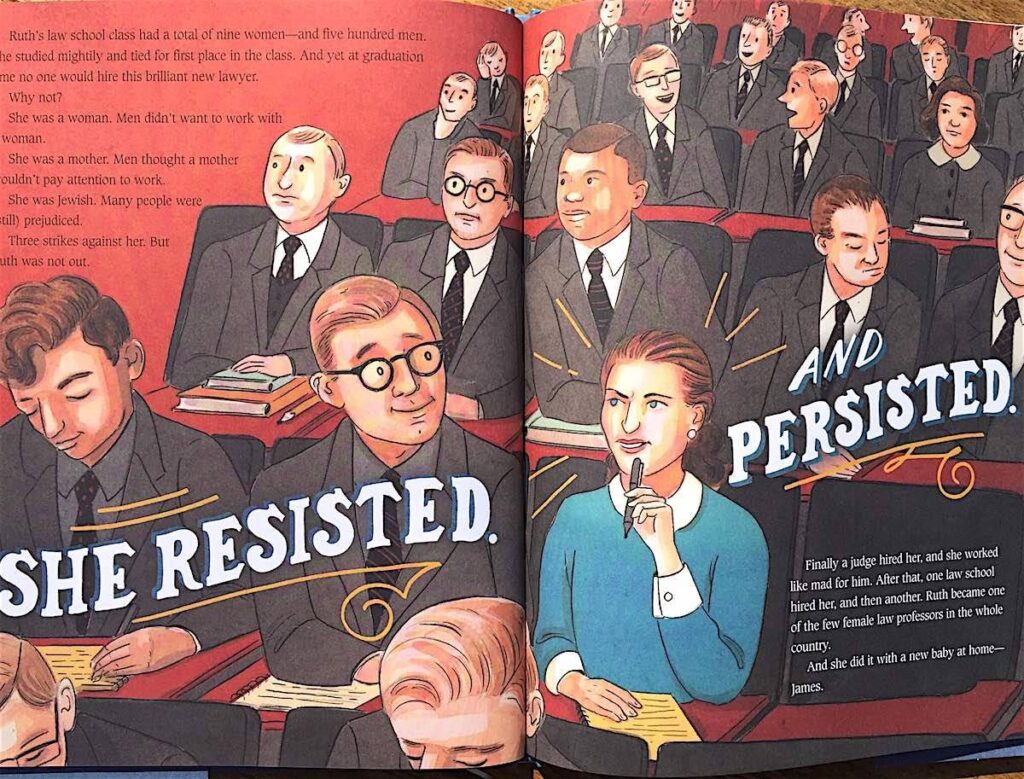
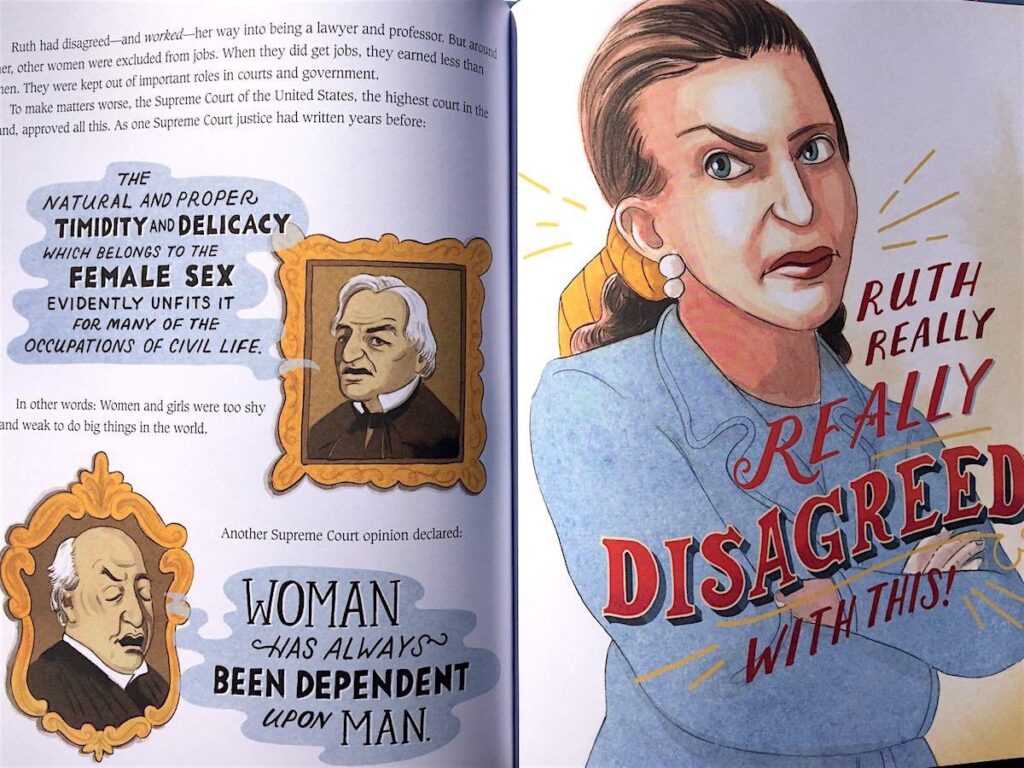
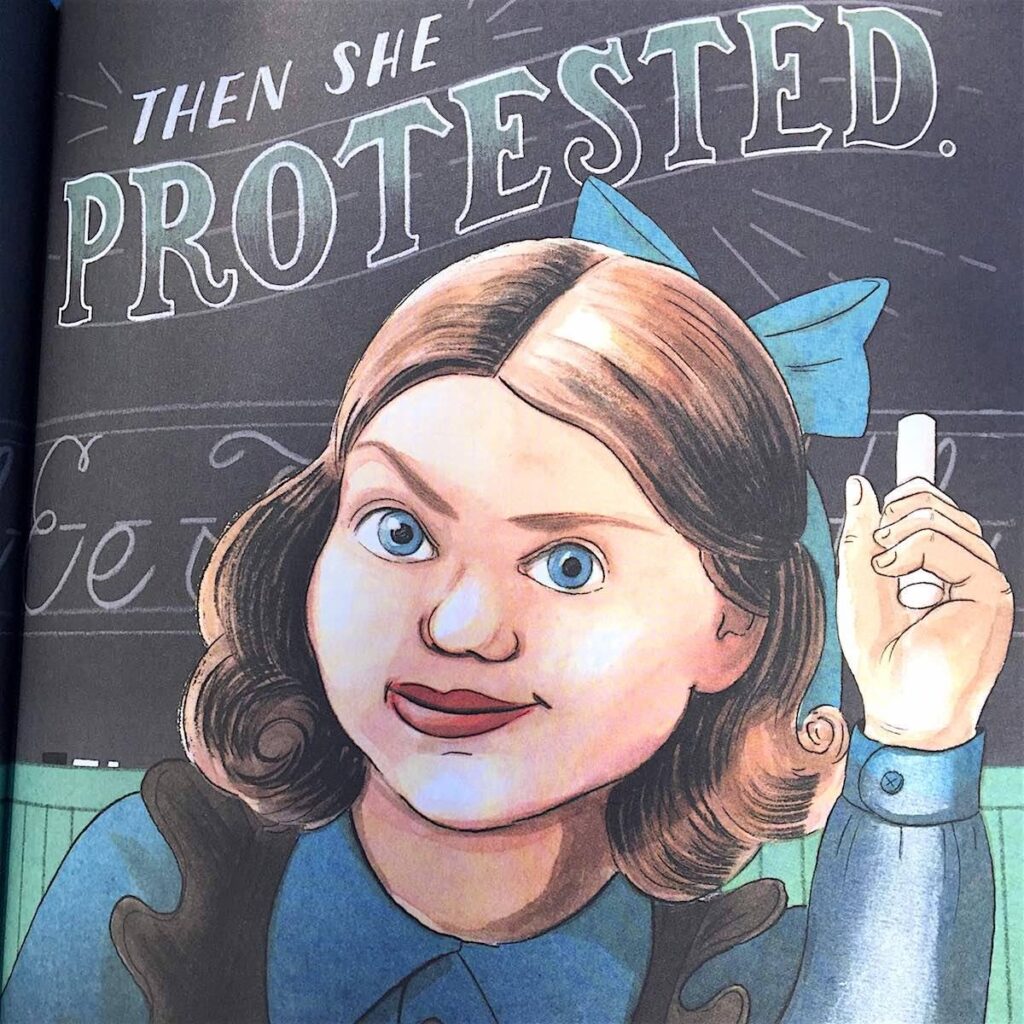

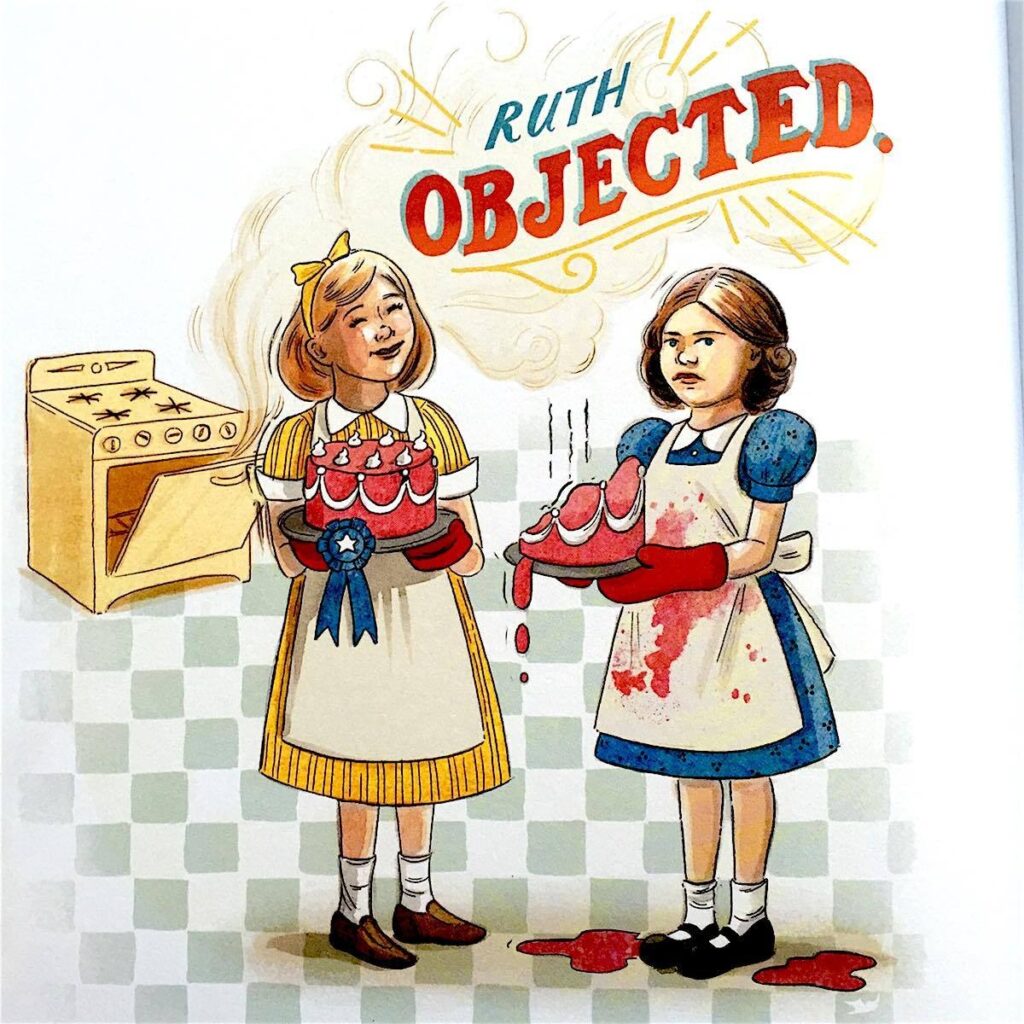


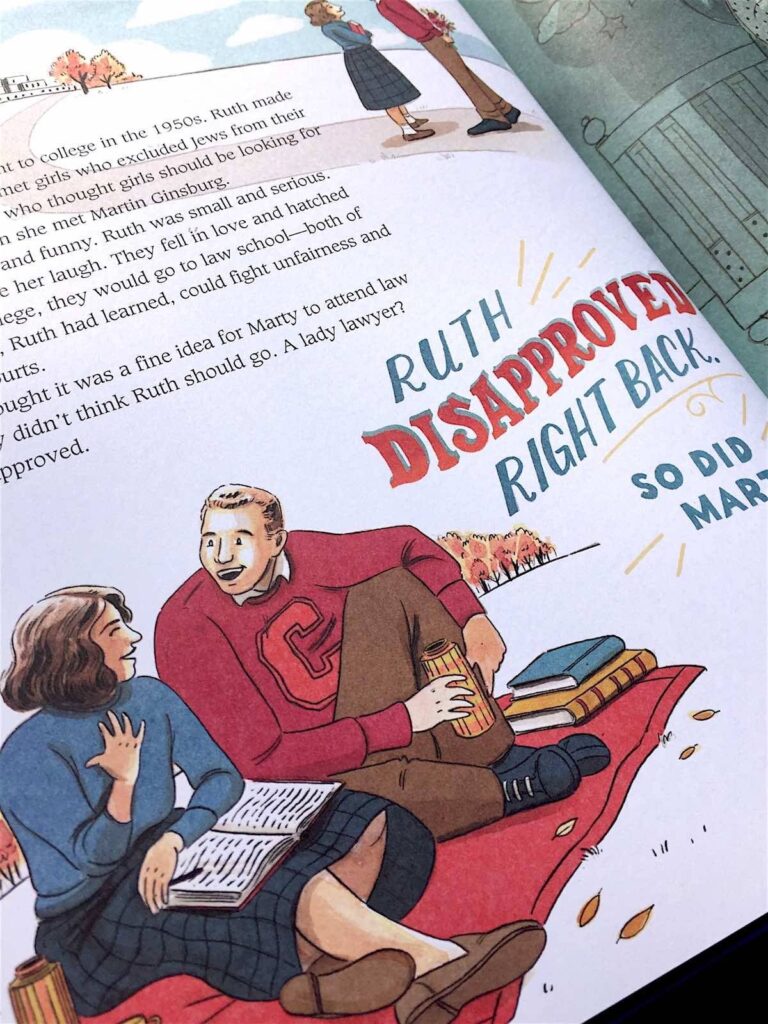
I Dissent: Ruth Bader Ginsburg Makes Her Mark
by Debbie Levy (author) and Elizabeth Baddeley (illustrator)
Simon & Schuster Books for Young Readers
2016, 40 pages, 8.5 x 11 x 0.6 inches (hardcover)
I’m going to be upfront here: this book made me cry. As a woman, mother to a daughter, and formerly outspoken little girl in a time and place where “feminism” was was an anachronistic term for bra-burning rather than the badge of pride and call to action it is today, this book made me grateful and proud. I was already an RBG fan – it’s pretty hard not to be – but I Dissent: Ruth Bader Ginsburg Makes Her Mark hammered home all of the reasons why it’s easy to admire the influential Supreme Court Justice through a beautiful, illustrated biography that stresses the importance of standing up for what’s right.
Debbie Levy frames RBG’s story with objections, beginning with her mother, Celia Amster Bader, who sets the tone for the book and for her daughter’s trajectory by encouraging little Ruth to strive for more in life than finding a husband. “Ruth’s mother disagreed,” is the first of many hand-lettered, marquee-like pronouncements that tie together Levy’s text and Elizabeth Baddeley’s visual storytelling. This bold dissention (“Then she protested.” “She resisted. And persisted.” “Ruth really, really disagreed with this!”) in the face of prejudice and sexism allows readers to feel the weight of injustice and the power of speaking up as they straighten their shoulders, square their feet, and shout with Ruth, “I dissent!”
I learned a lot through this book. Who knew that RBG and Antonin Scalia were friends? Or that Justice Ginsburg’s mother was such a driving force in her life? There is also a section for further reading after the story ends, including photos of RBG, information on cases referenced in the story, and a selected bibliography, which serves as a great resource for curious readers who want to learn more. – Mk Smith Despres
CHEAP NOVELTIES – RAW’S JULIUS KNIPL, REAL ESTATE PHOTOGRAPHER, FINALLY FINDS A SUITABLE HOME
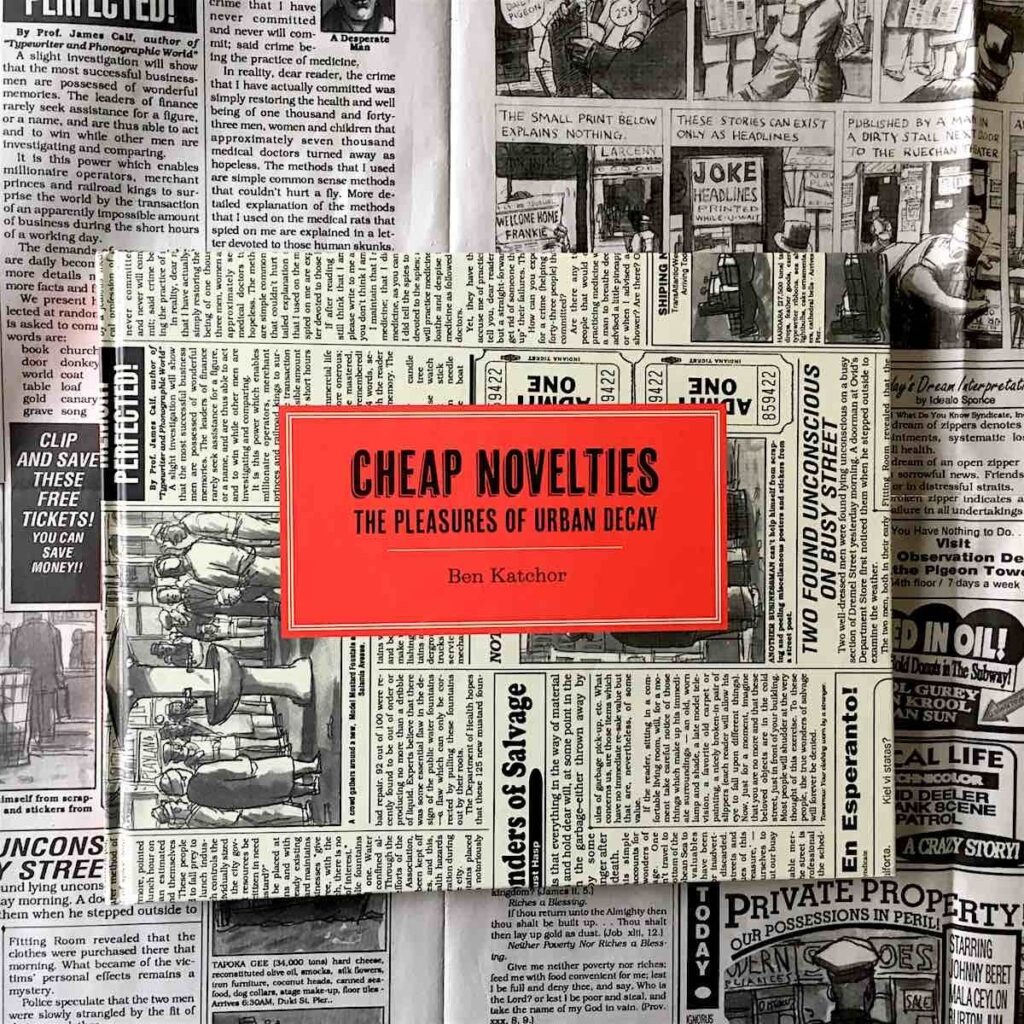
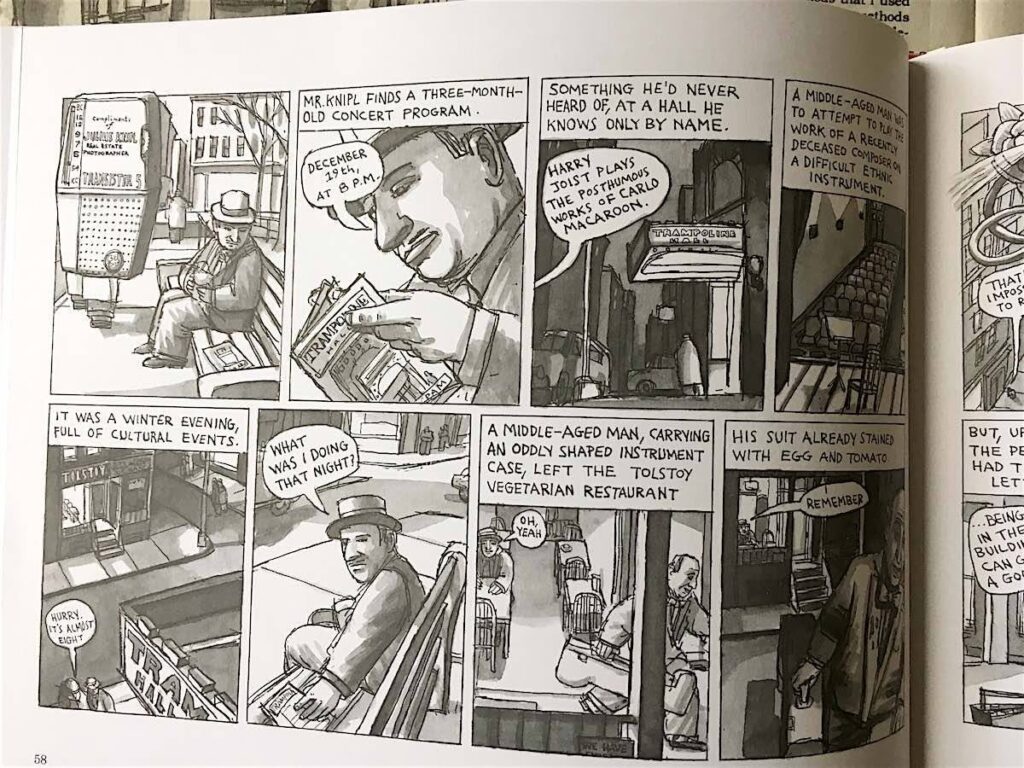
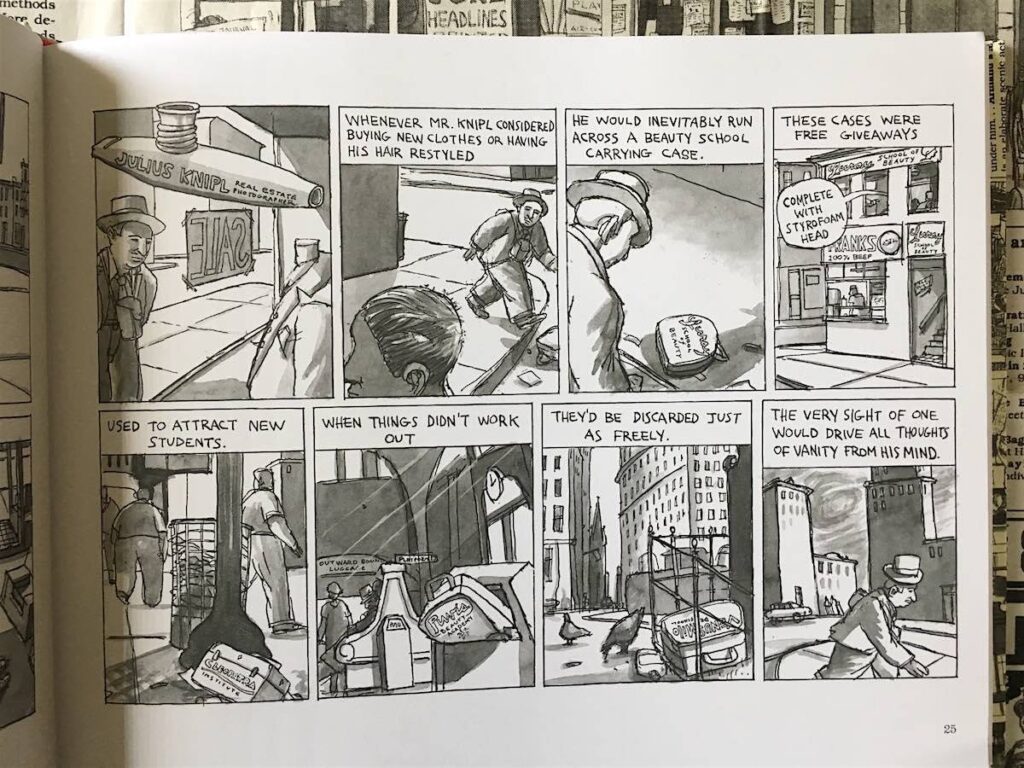
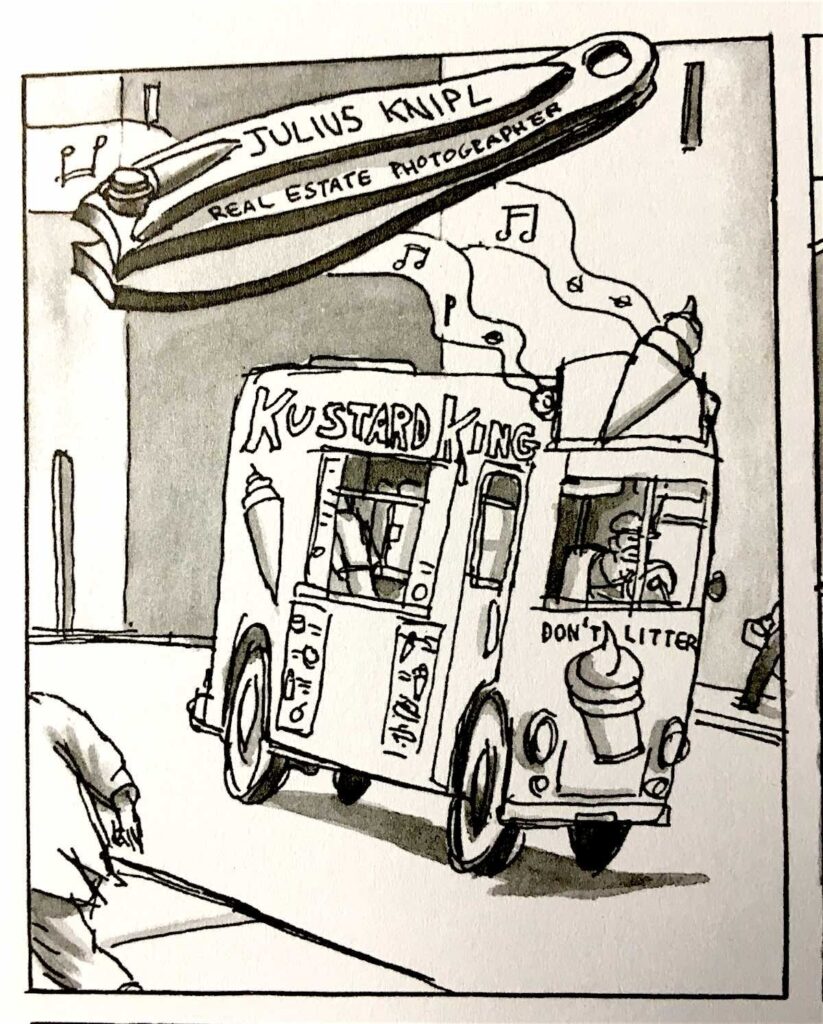

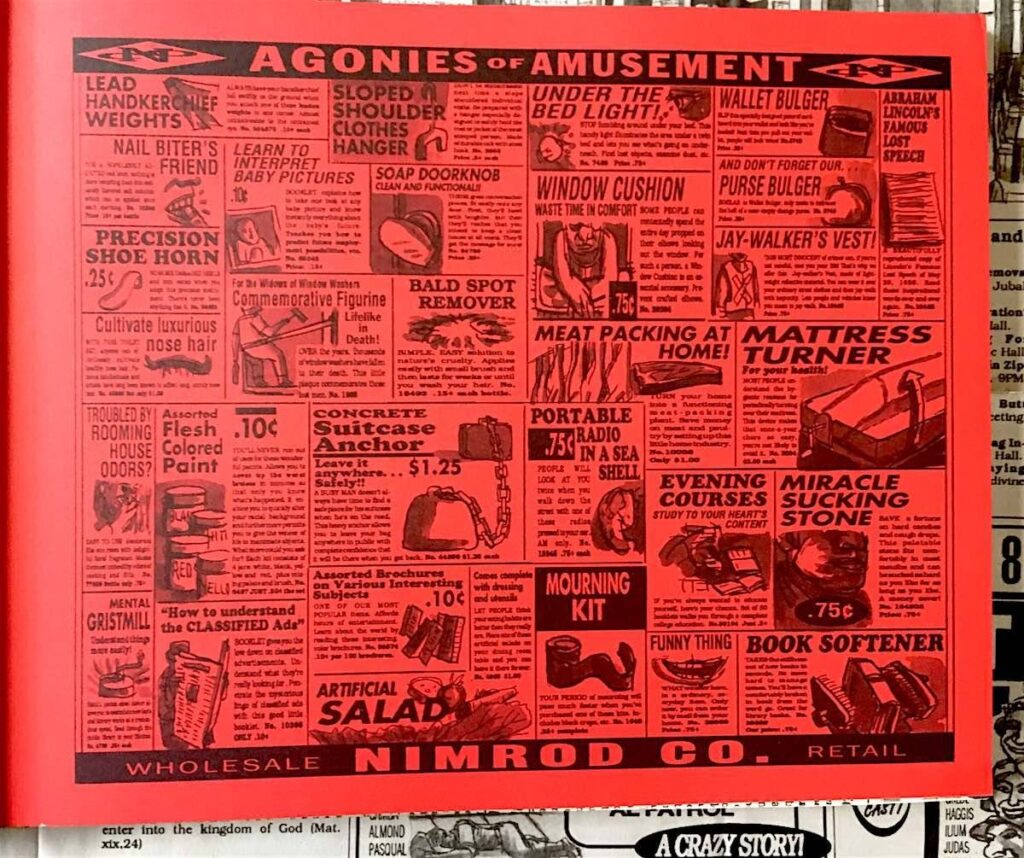
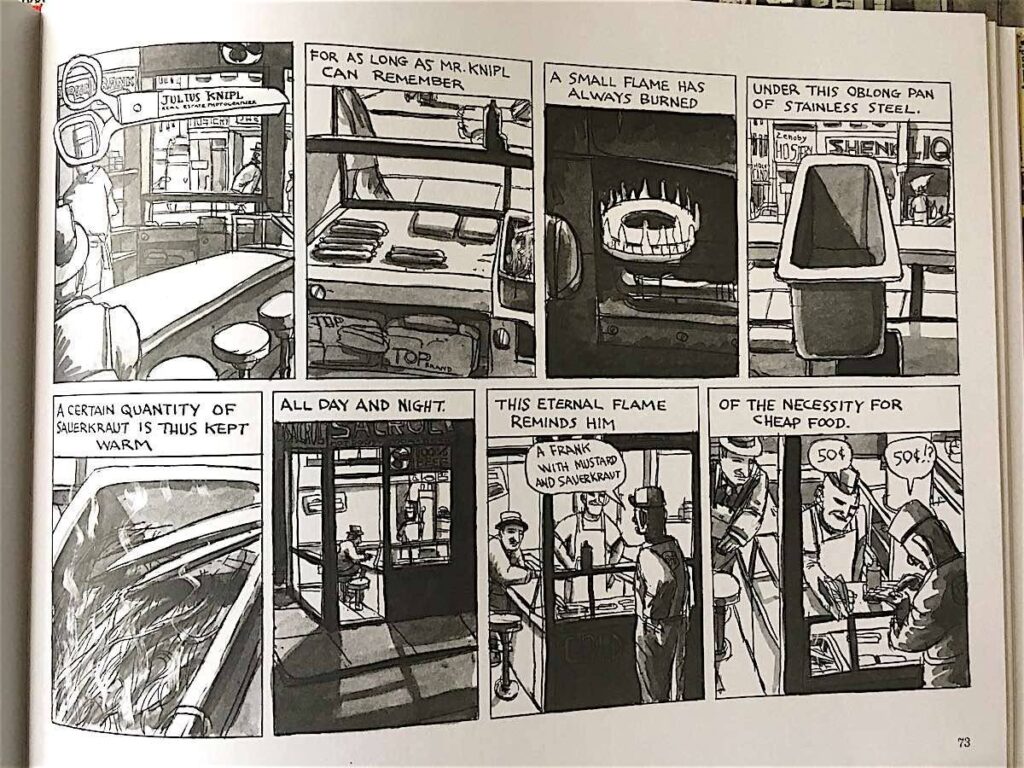

Cheap Novelties: The Pleasures of Urban Decay
by Ben Katchor
Drawn and Quarterly
2016, 112 pages, 8.8 x 10.9 x 0.7 inches (hardcover)
Like a lot of bourgeois bohemians in the 1990s, I was a huge fan of the RAW comics anthologies which, among other incredible discoveries, introduced me to the work of Ben Katchor. One might not think that a comic strip about urban architecture, culture, city development and decay, real estate photography, memory, and loss would make very compelling comics, but then you probably haven’t met Katchor’s beloved comic strip character, Julius Knipl, Real Estate Photographer.
Cheap Novelties: The Pleasures of Urban Decay, a collection of Katchor’s Knipl strips, was originally published in 1991 by RAW/Penguin as a cheap paperback. Twenty-five years later and Drawn & Quarterly finally gives Katchor and Knipl their due in a lovely hardbound, landscape edition of the original RAW strips.
If you’ve ever stared in wonder at the decades-old, sun-bleached product boxes inside of the display window of the only original hardware store left in town, or smelled an old typewriter repair shop, or purused gag gifts and tricks in a magic shop that’s been in the same city location for generations, then you’ll understand some of the lost urban culture that Cheap Novelties so deftly and melancholically evokes. As Julius Knipl is called out on building photography assignements, we see these vanishing haunts through his lens, momenents before they leave the city landscape forever, and we hear Knipl’s thoughts on the loss, reflections on his own rather homely life, and urban trivia – all rendered in a very confident and characterful hand in ink-and-gray marker washes.
Cheap Novelties was one of the series that launched the whole “graphic novel” revolution in comics. After touring the city disappearing beyond Julius Knipl’s lens, you will understand why. – Gareth Branwyn
Books That Belong On Paper first appeared on the web as Wink Books and was edited by Carla Sinclair. Sign up here to get the issues a week early in your inbox.
06/3/2502 June 2025
Buying Cars
Tools for Possibilities: issue no. 140

Warranted fixed-price used cars
CarMax is a great source for when you are in the market for a certified, warranted, used vehicle. I don’t know of any other dealership where you can test drive a used car, in excellent condition, and not have to go through a hard sell sales pitch, or a torturous bargaining phase when you decide to purchase it. The no-bargain price is right on the vehicles, and is often quite a bargain (with notable exceptions, so you have to do your independent price-point research ahead of time). The salespeople have no incentive to make a hard sell because of the way their commissions are set, and the fixed prices (so don’t bother bargaining). Additionally, if you decide within five days of your purchase that it was not the right car for you, you can return it for a full refund, regardless of how much you drove it (and yes, I have actually tested this out) with no reason needed beyond simply that you didn’t like the car. They also make a similar no-bargaining, no-low-balling offer for your trade-in, and let you know with 30-45 minutes exactly what they are willing to pay you for your car. And, as it should be, the two transactions don’t have to be tied to each other. They also have a decent website that lets you find the car you want nearby, or sign up to be notified via e-mail if a car matching your criteria shows up in their lots. Their Service Centers also seem to be squeaky clean and very impressive. They seem to be the elusive Car Dealership with a Conscience. My advice to anyone looking to buy or sell a used car, it behooves you to at least see what CarMax has to offer before making your final decision. — Surkhab Niazi
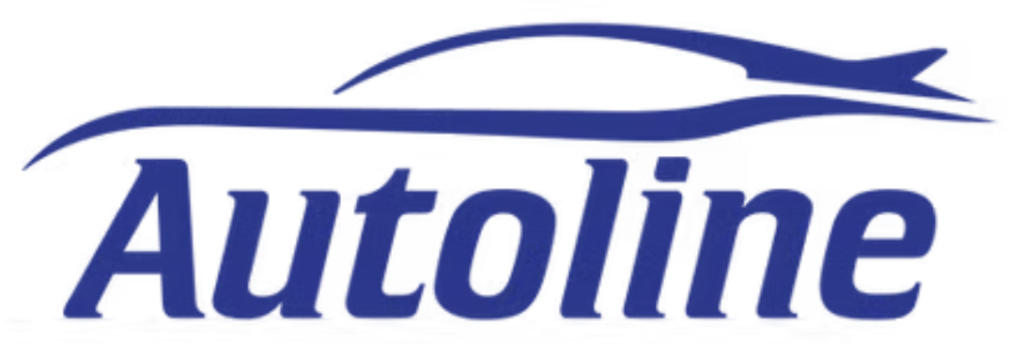
Convenient Car Buying Service
To find the best deal when buying a new car I use The Autoline. I can’t recommend them highly enough. For a modest fee they will find the car you want (or recommend the car you should buy based on your budget and requirements) and call you back with the best no-haggle price they can find. (They also do leases.) I’ve used them four times now and am very happy with the results. Each time they’ve arranged for dealer to deliver the car to my house, so I never have to set foot in the dealership or hassle with the guy who pressures you to buy useless “clear coat” and other pure profit add-ons.
Don’t be put off by their 1993-style website — all business is conducted by phone and email. — Mark Frauenfelder
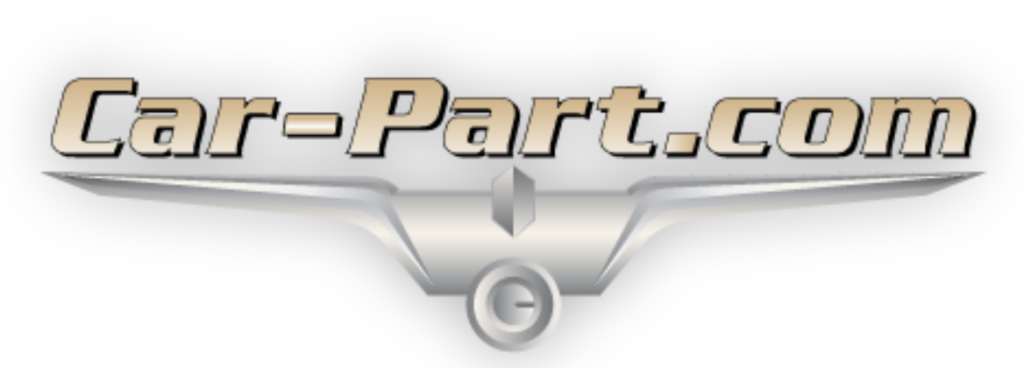
Better car part network
Getting quotes from Get Used Parts is nice and all but for the more hands-on “just give me the info” approach, Car-Part.com is a better fit. It actually gives you a list of all the places that have your part, their prices, condition etc with contact information for the seller and you can filter the results by area or state. A lot of parts are too big/heavy to ship or cost prohibitive so it helps to find nearby sellers. They even have a handy tool to help you figure out what a part is called if you don’t know.
The prices quoted online have been accurate and the parts are almost always available when you contact the seller. Most places have 800 numbers so its no big deal to call a few if need be or to find the best shipping prices. My dad has found several items to repair our family’s cars and has been happy with them. Of course the shipping costs, accuracy of item descriptions, etc will vary depending on the seller, but we haven’t had any issues to date. — Isaac Good

Used auto parts online network
After recently being involved in a minor fender-bender that resulted in a cracked tail light on my Subaru, I found that replacement parts would cost about $300 brand-new. A thorough web search confirmed that no lower prices could be found for new parts. Then I thought of trying to find the parts from a junkyard, but soon realized that would involve calling all of the junkyards in my area and then traveling to get the part, if one could be found. So I did what any person would do in this day and age and searched Google for used or salvaged auto parts and found this website. Once I entered in the year, make, model of my car and the exact part I needed, I received a phone call a half our later from a junkyard in Alabama that had exactly what I needed. They sent me the part for $95, including shipping.
There are several other sites that do essentially the same thing, i.e. use a standardized format to send a parts request to multiple junkyards and salvage lots around the country. I use this one because it has the nicest interface and I received the best and fastest quote on the parts I needed. One thing I noticed in using these sites is that they all used the same software for selecting the year, make, model of the car and parts needed. Some entrepreneurial software company must have identified this niche and they now monopolize the market for this specialized type of software. — Jason Spitzer

The ultimate dry
For the last five years I’ve used a synthetic chamois called The Absorber to dry my boat and cars. It is so good I can’t bear to use anything else. It holds more water and absorbs faster than towels or real chamois. The chamois I used years ago had to be thoroughly dried out after use or it would rot, and when dry, was hard to store. Then you had to get it wet before use and wring it out frequently since it didn’t hold much water. A towel, once wet, doesn’t leave a dry surface (all those spots). The Absorber when moderately wet leaves your surface utterly dry. It’s kind of amazing, really.
After you’re done using it, just fold it in half, roll it up wet and tuck it in its hard plastic storage tube. It says you can machine wash it but I haven’t tried that myself.
On the company website, you can read details on its PVA open-cell material. The company claims that the product is “the best drying tool you’ll ever discover” and I have to agree it is — it is superior drying technology. I now own four of them in different colors. The site says you can use it to dry pets but I have never tried it on my dog (she’s a short hair model and doesn’t really need it), but I will try it on myself. —Steve Leveen

Free car buff magazine
Winding Road is a free digital car magazine that arrives once per month — you can either view it online in flash or download it in PDF. Apparently the magazine hired away some of the good writers from the other well-known car magazines. They are doing a pretty decent job. The magazine has cool videos and audio interviews throughout, and the photos are very good. They also have a daily news site. With Winding Road I can get all the car magazine stuff I need, without having to pay, and they never asked me for a credit card number or any of that. I’ve cancelled my Car and Driver subscription because I don’t need it anymore. — Roy Nesseth

We had the Smart EV for several parade loops around Brooklyn and Manhattan, and certainly the cars were 100 percent in their element here. We do completely adore the in-cabin sitting-at-the-wheel relationship; it’s still near perfect and tremendously comfortable. The spatial attitude of the driver and our view out of the car are both near perfect in urban situations as well.
Acceleration to 37 miles per hour is quoted at 6.5 seconds, and top speed is capped at just 62 mph. That speed cap will keep drivers from routinely sucking the 16.5-Kwh, Tesla-Daimler lithium-ion battery pack dry, and thus falling way short of the quoted 82-mile range. The transmission is just an on/off switch really, with a single-speed system overseeing things. This automatically makes the ForTwo ED better than the gas-powered sibling, as the five-speed simplistic SofTouch automatic is, frankly, quite an awful experience.
Another mixed message: until the 2013 model year, these initial Smart ForTwo ED cars are available only on exorbitant 48-month leases at $599 per month. That’s $28,752 total, but the federal income tax credit is bound to be for the full $7500 possible,thus bringing the take down to $21,252 or, in the end, about $4,000 less than the base Nissan Leaf.

Evo has gotten an early drive of the BMW i8 prototype in northern Sweden.When driving, there is a whine from the three-cylinder motor, but it isn’t what one would consider bad. They describe it as sounding a bit like an early Porsche 911.
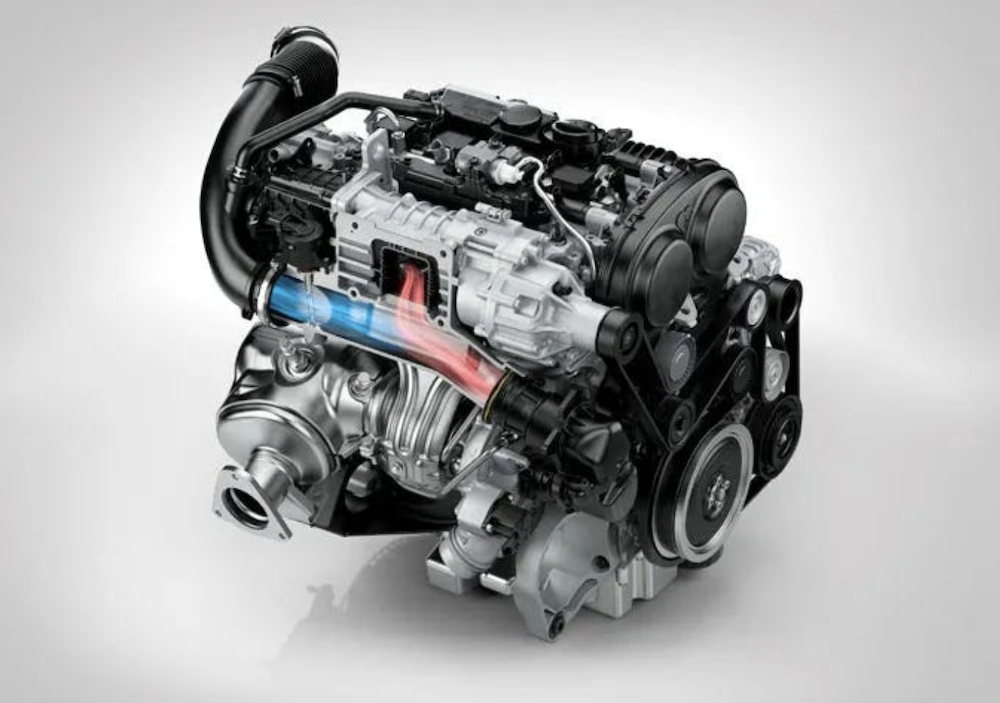
Volvo has introduced a new engine family called Drive-E with two offerings, one of which is both turbocharged andsupercharged.
Once a week we’ll send out a page from Cool Tools: A Catalog of Possibilities. The tools might be outdated or obsolete, and the links to them may or may not work. We present these vintage recommendations as is because the possibilities they inspire are new. Sign up here to get Tools for Possibilities a week early in your inbox.
06/2/25ALL REVIEWS
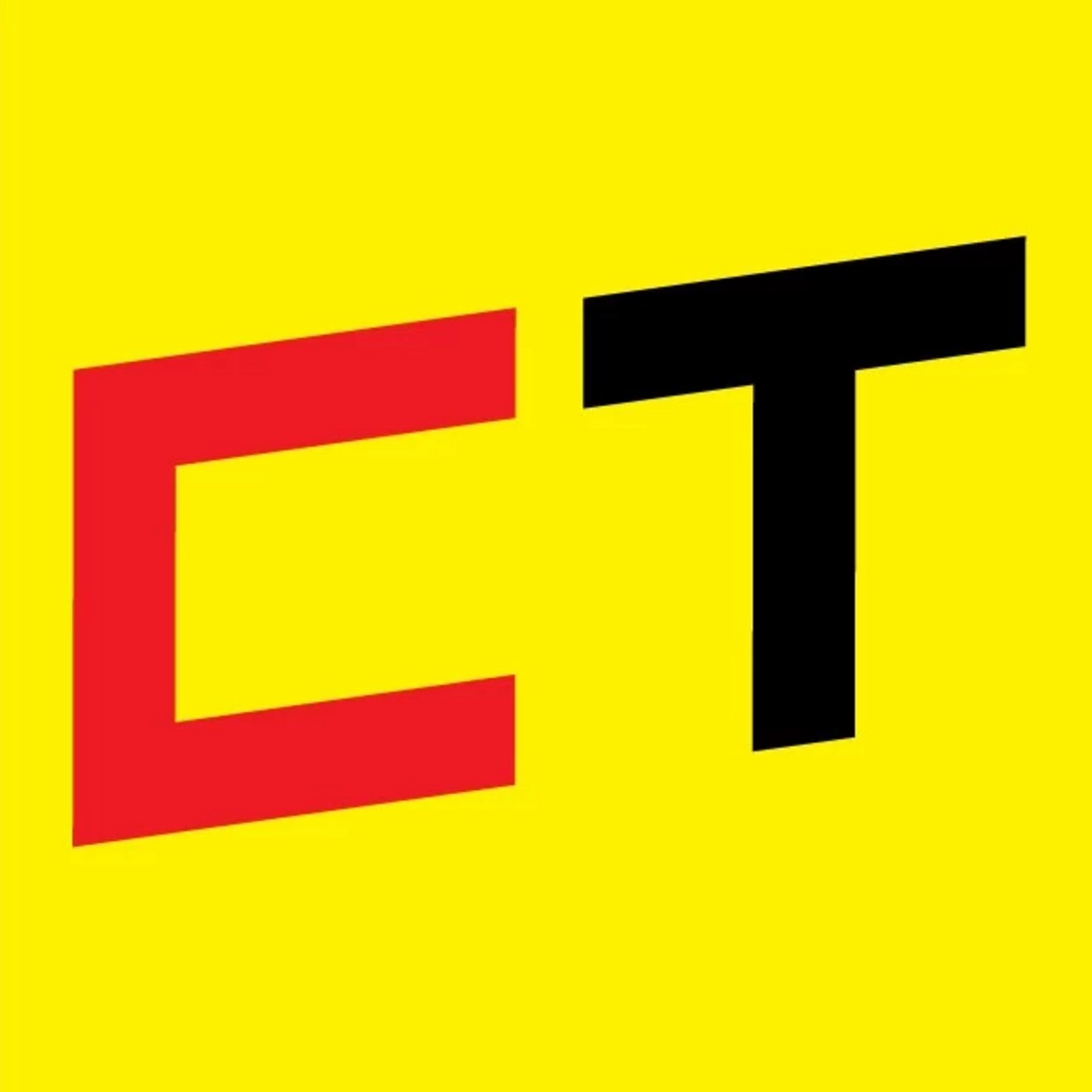 06/1/25
06/1/25
Gar’s Tips & Tools – Issue #199
Access to tools, techniques, and shop tales from the diverse worlds of DIY
EDITOR'S FAVORITES
COOL TOOLS SHOW PODCAST
WHAT'S IN MY BAG?
21 May 2025

ABOUT COOL TOOLS
Cool Tools is a web site which recommends the best/cheapest tools available. Tools are defined broadly as anything that can be useful. This includes hand tools, machines, books, software, gadgets, websites, maps, and even ideas. All reviews are positive raves written by real users. We don’t bother with negative reviews because our intent is to only offer the best.
One new tool is posted each weekday. Cool Tools does NOT sell anything. The site provides prices and convenient sources for readers to purchase items.
When Amazon.com is listed as a source (which it often is because of its prices and convenience) Cool Tools receives a fractional fee from Amazon if items are purchased at Amazon on that visit. Cool Tools also earns revenue from Google ads, although we have no foreknowledge nor much control of which ads will appear.
We recently posted a short history of Cool Tools which included current stats as of April 2008. This explains both the genesis of this site, and the tools we use to operate it.

